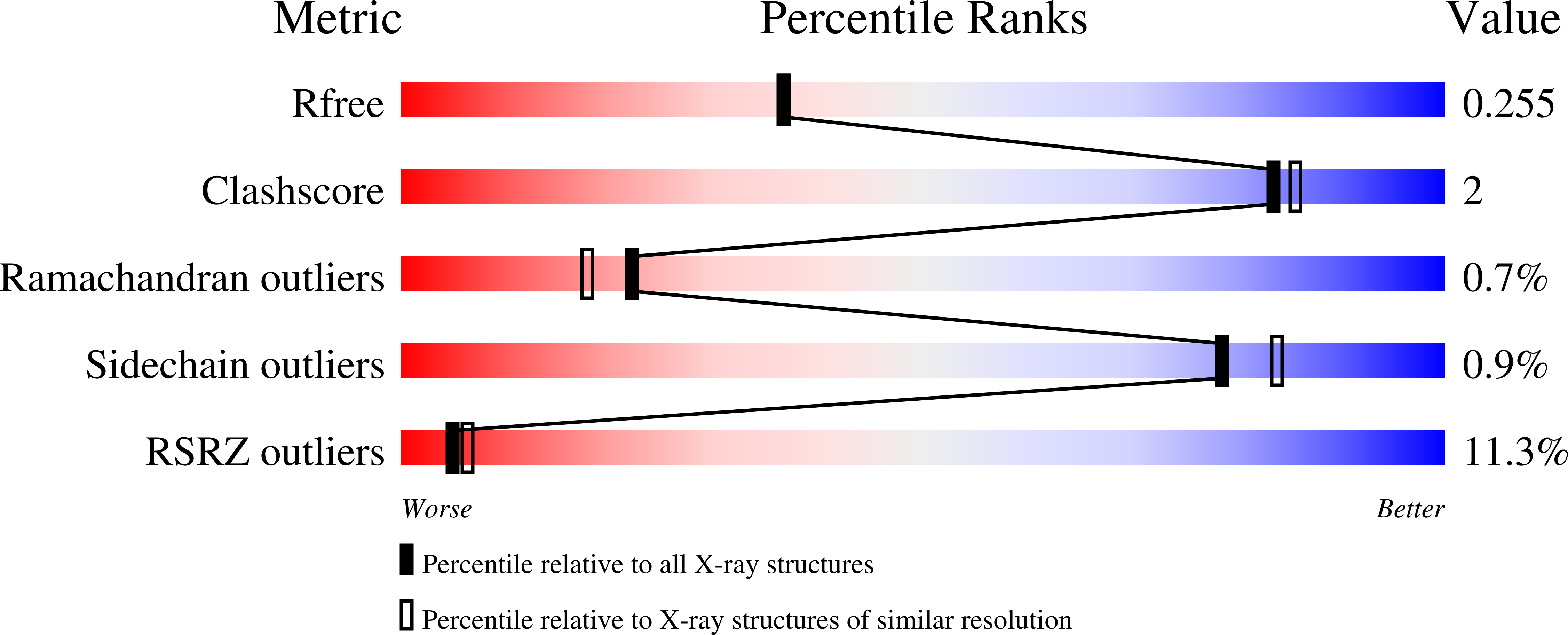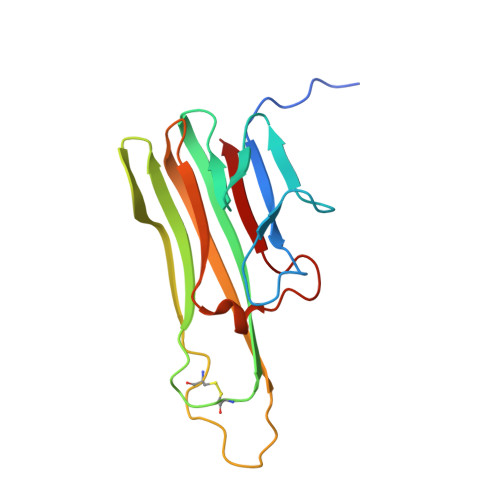Biologic-like In Vivo Efficacy with Small Molecule Inhibitors of TNF alpha Identified Using Scaffold Hopping and Structure-Based Drug Design Approaches.
Xiao, H.Y., Li, N., Duan, J.J., Jiang, B., Lu, Z., Ngu, K., Tino, J., Kopcho, L.M., Lu, H., Chen, J., Tebben, A.J., Sheriff, S., Chang, C.Y., Yanchunas Jr., J., Calambur, D., Gao, M., Shuster, D.J., Susulic, V., Xie, J.H., Guarino, V.R., Wu, D.R., Gregor, K.R., Goldstine, C.B., Hynes Jr., J., Macor, J.E., Salter-Cid, L., Burke, J.R., Shaw, P.J., Dhar, T.G.M.(2020) J Med Chem 63: 15050-15071
- PubMed: 33261314
- DOI: https://doi.org/10.1021/acs.jmedchem.0c01732
- Primary Citation of Related Structures:
7JRA - PubMed Abstract:
Scaffold hopping and structure-based drug design were employed to identify substituted 4-aminoquinolines and 4-aminonaphthyridines as potent, small molecule inhibitors of tumor necrosis factor alpha (TNFα). Structure-activity relationships in both the quinoline and naphthyridine series leading to the identification of compound 42 with excellent potency and pharmacokinetic profile are discussed. X-ray co-crystal structure analysis and ultracentrifugation experiments clearly demonstrate that these inhibitors distort the TNFα trimer upon binding, leading to aberrant signaling when the trimer binds to TNF receptor 1 (TNFR1). Pharmacokinetic-pharmacodynamic activity of compound 42 in a TNF-induced IL-6 mouse model and in vivo activity in a collagen antibody-induced arthritis model, where it showed biologic-like in vivo efficacy, will be discussed.
Organizational Affiliation:
Research and Early Development, Bristol Myers Squibb, 3551 Lawrenceville Road, Princeton, New Jersey 08540, United States.
















